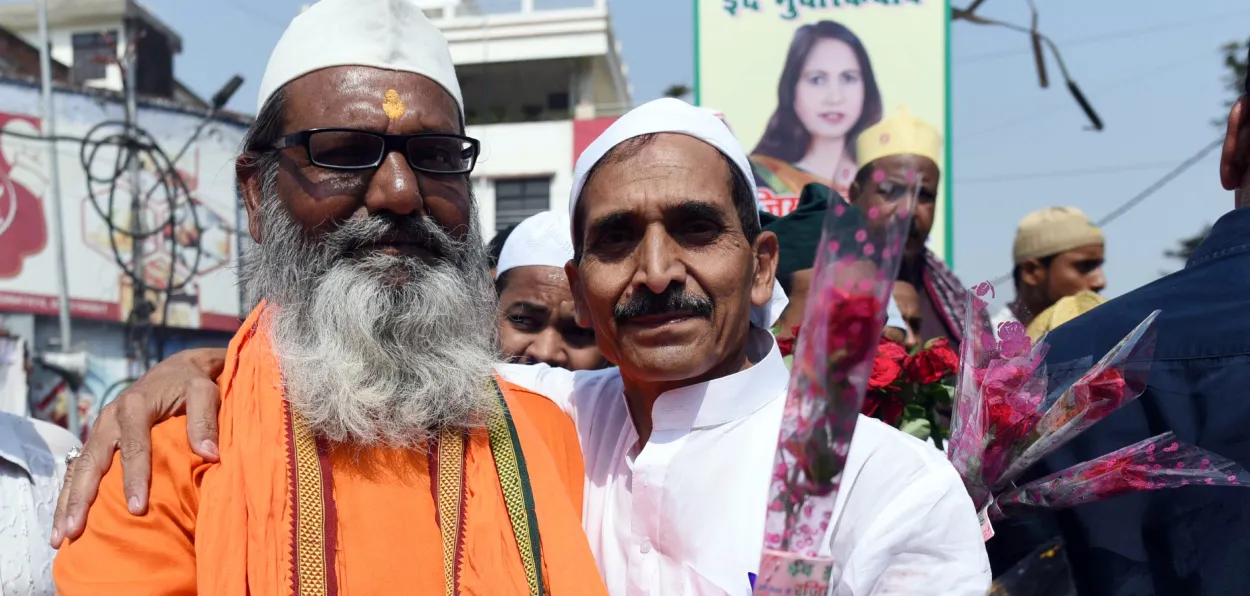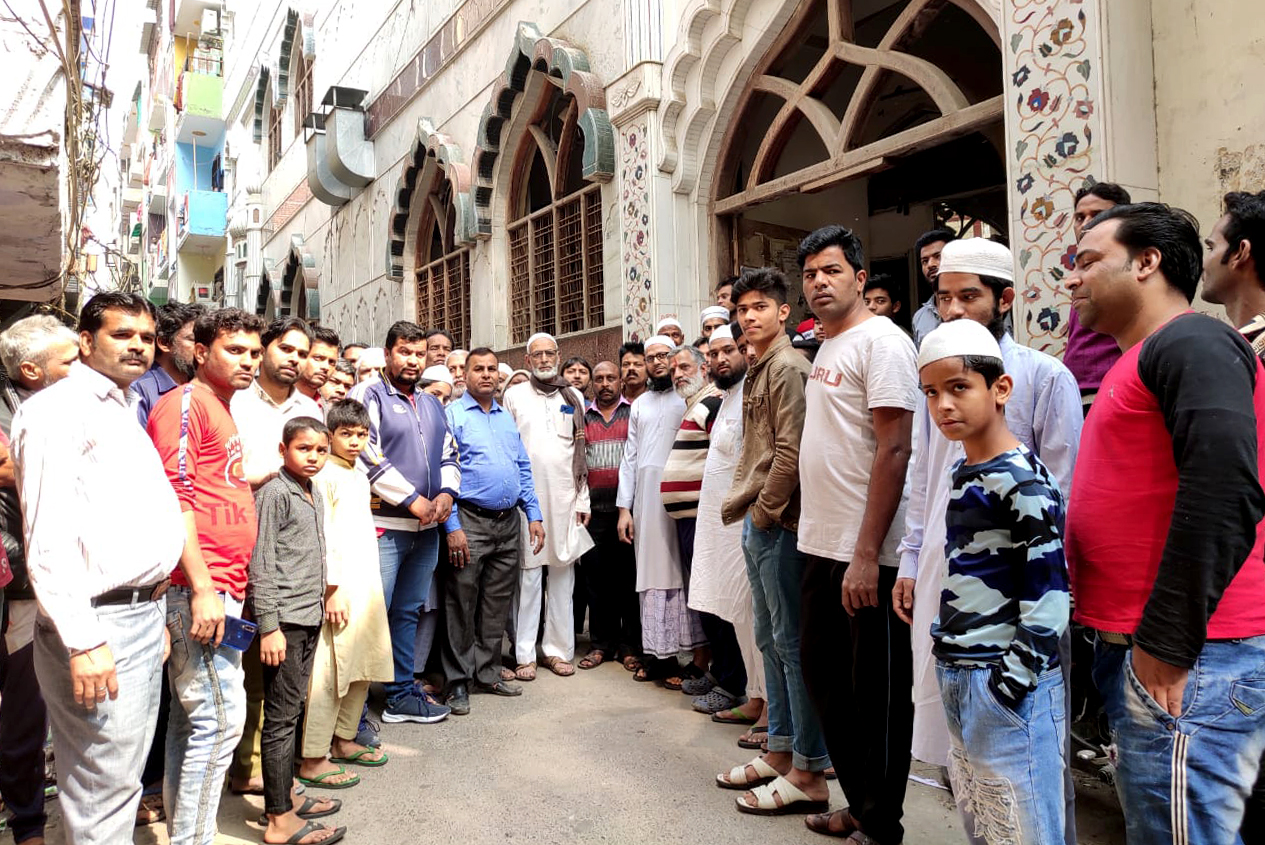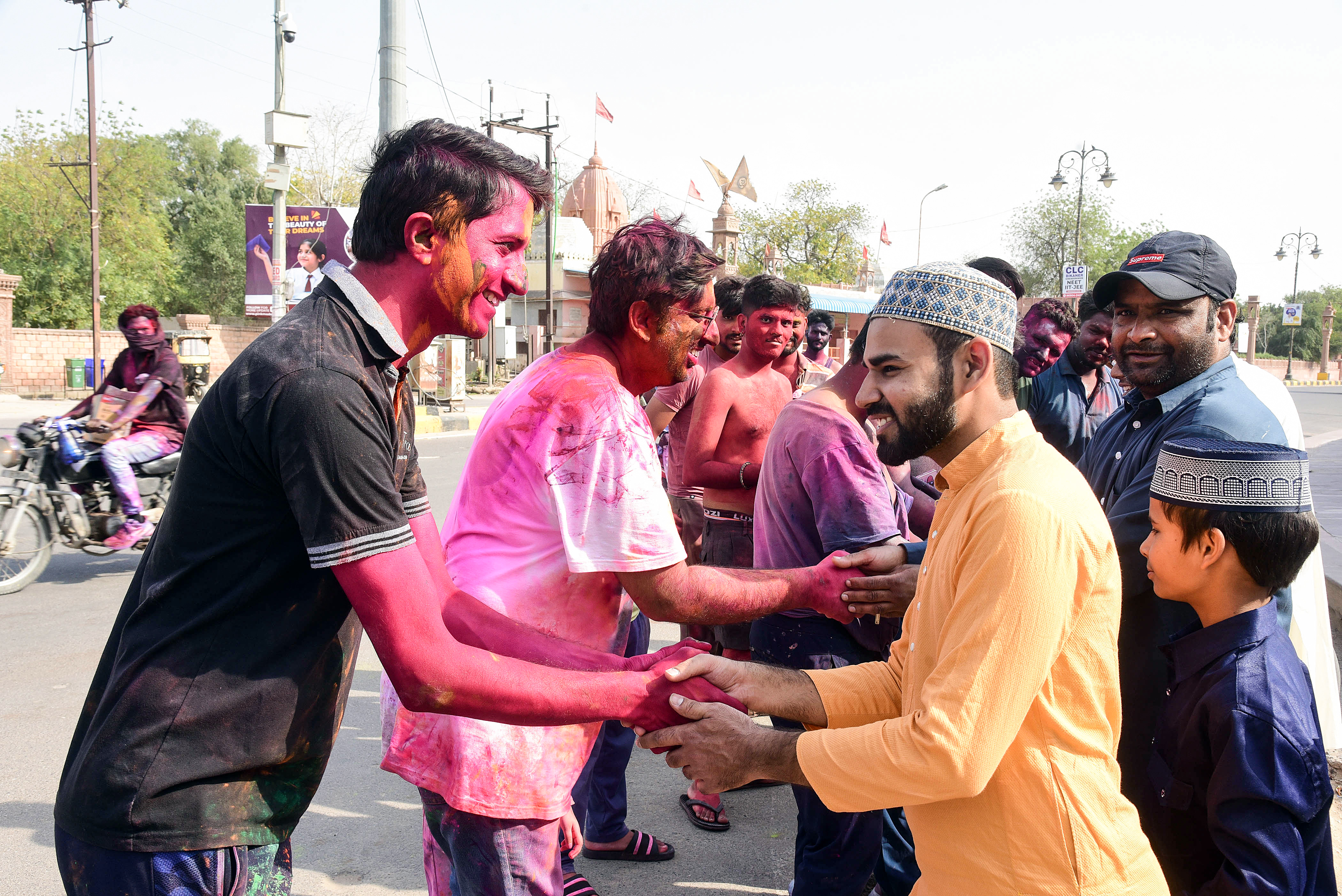
Uzma Khatoon
When history is used as a weapon to divide, it's crucial to remember India's shared past. The real story is not "difference and conflict" but a deep "Ganga-Jamuni Tehzeeb." The conflict-focused narrative, which wrongly treats Hindus and Muslims as opposing groups, is a distortion and must be challenged.
Instead, this analysis builds upon the foundational ideas of scholars like Tara Chand. His seminal book, Influence of Islam on Indian Culture, famously argued for a "Composite Culture," focusing on the more accurate history of "assimilation and synthesis."
A central point is Islam's 'Tawhid' (Oneness of God) and its purported link to Shankara's 'Advaita' Vedanta, which is philosophically inexact. 'Tawhid' (Monotheism) establishes God as the transcendent Creator, separate from creation (a duality). 'Advaita' (Monism) asserts the oneness of reality (Brahman), where 'Tat TvamAsi' (Thou art That) declares the non-difference between 'Atma' and 'Brahman'. 'Tawhid' maintains duality; 'Advaita' sees it as an illusion. The claim that this influenced 8th-century Shankara is historically weak, lacking direct testimony.
While Arab traders were on the Malabar coast, their focus was commerce; a solid Islamic intellectual presence is documented only after the 10th century. The resemblance is real but misplaced. The true dialogue flourished centuries later, with profound parallels between Ibn Arabi's (12th-13th c.) 'Wahdat-ul-Wujud' (Oneness of Being) and 'Advaita' Vedanta, suggesting a two-way influence.

Hindus and Muslims of Goutampuri, NE Delhi, who protected each other during the 2020 riot
The "scientific temper" argument highlights a complex, two-way flow. First, from India to Baghdad (8th-9th c.): The Islamic Golden Age rested on Indian intellectual property. Abbasid caliphs translated Sanskrit texts by Brahmagupta ('Sindhind'), introducing 'zero' and Indian numerals (now 'Arabic numerals') to the Islamic world. Al-Khwarizmi's foundational work ('algebra') was based on these systems. Second, from Persia back to India (12th c. onwards): This synthesised knowledge (Greek, Persian, Indian) returned. A key example is 'Unani medicine'. Originally Greek, and refined by scientists like Ibn Sina. It was brought to India, interacted with 'Ayurveda', and created a distinct 'Indo-Unani' tradition. This influence was a re-import.
Islamic doctrine brought a message of "equality of all humans," posing an ideological challenge to the caste system. Its impact was complex, seen in the "capital (city) vs. country (village)" divide. Muslim rule was an urban phenomenon; cities like Delhi and Agra became Persianised and cosmopolitan centres. In contrast, rural India remained autonomous, its caste-based fabric largely unchanged. The observation "people changed their creed, but not their lifestyle" is a sociological truth. Islam spread primarily through peaceful Sufi preaching and voluntary conversion, mostly from "lower" caste groups seeking escape from discrimination.
 Muslims greeting Hindus on Holi in Bikaner, Rajasthan
Muslims greeting Hindus on Holi in Bikaner, RajasthanThe real stage for synthesis was in Sufi dargahs and Bhakti satsangs. These popular movements interacted on common ground: both emphasised love ('Bhakti'/'Ishq'), criticised ritualism, stressed a spiritual guide (Guru/Pir), and preached equality. The 'Langar' (community kitchen), popularised by Chishti Sufis, was a revolutionary social tool, forcing everyone, regardless of caste, to sit together (pangat) and share food. This synthesis was also poetic, seen in the exchange with Vaishnava bhakti. The 16th-century 'Haqaiq-e-Hindi' justifies Chishti Sufis singing Hindu devotional songs (Krishna, Radha) in 'Sama', equating these symbols with Islamic mysticism. Sufi 'Premakhyans' like Jayasi's 'Padmavat' (in Awadhi) blended Hindu folklore and Sufi mysticism. The Sufi 'Sama' and Hindu 'Kirtan' were shared efforts to reach God through music, often adopting a 'feminine voice' (the soul as lover).
The most enduring legacy is a shared language. From the local 'Khari Boli', 'Hindustani' became the 'lingua franca' of army camps (Turkish 'Ordu', hence 'Urdu'), bazaars, and Sufi shrines, borrowing from Persian and Arabic. This fusion—Indian grammar, Perso-Arabic vocabulary—was politically split in the 19th century into 'Hindi' (Devanagari) and 'Urdu' (Perso-Arabic) scripts, but they remain one spoken language. This synthesis is visible in dress ('Sherwani') and 'Mughlai Cuisine' ('Biryani'). This was not just top-down: 'Khichri', an indigenous dish, was adopted by royal kitchens. 'Hindustani Classical Music' also absorbed Persian influences, creating new 'ragas', instruments (Tabla), and forms ('Ghazal', 'Qawwali').
Islam's institutional impact is also profound. The Mughals introduced a centralised administration, seen in the 'Zabt' revenue system, perfected by Raja Todar Mal, which integrated local Indian practices with a Persian bureaucratic model. The most lasting impact is legal pluralism. The Mughals, while using Islamic law for criminal matters, allowed Hindus to follow their own community laws (Dharmashastras) in civil matters. Ironically, this Mughal system was codified by the British. Warren Hastings's 1772 regulations established this principle, creating 'Anglo-Muhammadan Law'. The culmination was the Muslim Personal Law (Shariat) Application Act of 1937, a colonial-era law still basing Muslim 'Personal Law' in India today.
ALSO READ: Azra Naqvi uses mobile app to further the cause of Urdu and women writers
The idea of a 'pure' Hindu or 'pure' Muslim culture in India is a historical myth. This 'Ganga-Jamuni Tehzeeb' is a living reality. This does not mean history was free of conflict; these relationships were often forged within unequal power structures. However, to focus only on conflict and ignore the synthesis is a distortion. The fabric of Indian culture is intricately woven from Hindu (Vedic, Upanishadic, Folk) and Islamic (Persian, Turkic, Arab) threads—it is "impossible to separate them." This fusion is present in our food, language, music, and law: a continuous, living dialogue that defines modern India.
Dr. Uzma Khatoon, former faculty at Aligarh Muslim University
